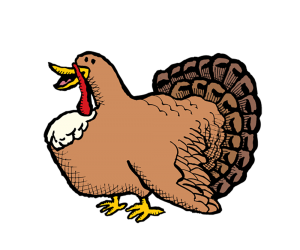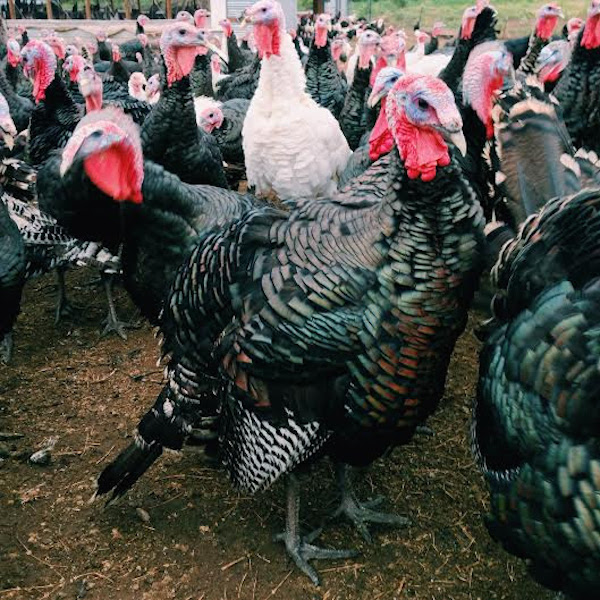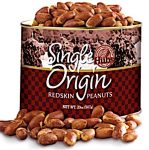Heritage Turkeys at Zingerman’s Mail Order
The Thanksgiving turkey most of us are used to is very different than the turkey that would have been on our table a hundred years ago. They look different: today’s commercial turkeys are all white with a broad,  distended breast; traditional turkeys range from white to tan to bronze to black and have a longer, leaner body. They act differently: most turkeys today have been bred to live in close confinement with little movement; traditional turkeys trot, strut, run, roost, and fly (Les Nessman was right). They taste different, too: grocery store turkeys are pumped full of brine so they’re not completely bland; traditional birds have a bigger, more robust flavor.
distended breast; traditional turkeys range from white to tan to bronze to black and have a longer, leaner body. They act differently: most turkeys today have been bred to live in close confinement with little movement; traditional turkeys trot, strut, run, roost, and fly (Les Nessman was right). They taste different, too: grocery store turkeys are pumped full of brine so they’re not completely bland; traditional birds have a bigger, more robust flavor.
Luckily, there are still a few opportunities out there to taste the turkeys that our grandparents grew up with.
That’s thanks to the hard work of farmers like Frank Reese and Bill Niman. Frank, the godfather of the heritage breed turkey world, raises them on his 180-acre farm in Lindsborg, Kansas. He’s a fourth-generation turkey farmer, an impressive length of time to do anything, let alone raise turkeys. But more impressive than his own family history is that of his turkeys: he can trace back nearly a hundred generations, all the way to 1917 for his Standard Bronze turkeys. Along with the Bronzes, he raises a handful of other heritage breeds that were popular fifty years ago but have all but disappeared today: Narragansett, Black, White Holland, Bourbon Red. Thanks to Frank’s work, more and more farmers—including Bill Niman, a pioneer in the world of humanely raised beef and pork at his former company, Niman Ranch—are beginning to raise heritage breed turkeys, too.
Today, one breed of turkey dominates more than 99% of Thanksgiving tables: the Broad Breasted White. It’s a fitting name. The breast is so large that the turkey has trouble standing, let alone walking. Forget flying. They can’t mate naturally so they have to be artificially inseminated. The birds suffer severe disfigurement: their claws, wings, beaks, and snoods—the fleshy part that hangs from the top of a turkey’s head—are clipped to keep them from fighting (or at least to keep them from doing much damage to each other when they do fight, an inevitability since they’re kept in tight, crowded spaces). White feathers are favored because darker feathers can leave small dark spots on the meat when the bird is plucked. That doesn’t sound like such a bad thing except that white-feathered turkeys are less disease resistant so they’re fed antibiotics their entire lives. They’re not given any hormones, but that’s only because those hormones were banned due to health concerns—not for the turkeys, but for the people eating them.
If all of this is starting to make you depressed, you’re not alone. I was too. Until I met Frank’s birds.
Heritage breed turkeys, like the ones that Frank and Bill raise, are a totally different animal.
Heritage turkeys must be able to do three things:
1. Mate naturally. Frank spends February and March helping to set the Valentine’s Day mood for his turkeys. He separates each breed into its own barn, turns on the heat lamps for the only time all year, and lets nature take its course. Apparently, turkey hens don’t require chocolate or roses.
2. Live outdoors, moving around normally and enduring whatever weather comes along. Frank and Bill keep their turkeys in barns at night for protection from coyotes, but every morning the turkeys are let out to spend their days strutting around the yard, flying over fences, chasing rabbits that come too close, and, at least when I visited Frank’s farm, pecking inquisitively at unfamiliar humans. They eat bugs and wild grasses and any rodents they catch (turkeys are omnivores) as well as a bit of supplemental corn and soy, but they’re never fed any antibiotics. To allow them to get along out in the elements, Frank and Bill never clip their turkeys’ claws, beaks, wings, or snoods.
3. Grow slowly. Frank and Bill’s birds take six months to grow to their full size, a natural growth rate for turkeys. By contrast, Broad Breasted White turkeys take half that long to reach full size, which is great news for the team in accounting but not so good for the bird’s welfare—or its flavor.

A beautiful Standard Bronze turkey at Frank Reese’s farm in Lindsborg, Kansas. Photo by Val Neff-Rasmussen
The difference in flavor between industry birds and heritage birds is like the difference between Wonderbread and a loaf of French Mountain Bread.
Active lifestyle, varied diet, and a longer lifespan all add up to more flavorful meat. Heritage turkeys taste richer, more like turkey, if that makes sense. The breast, while less plump, has flavor that’s a far cry from the bland meat we’re used to. Frank’s turkeys have won taste competition after competition across the country, including ones held by the New York Times and America’s Test Kitchen. In our kitchen here at Zingerman’s, Bill’s turkeys from his new company, BN Ranch, were a big winner in our own turkey taste test. This year we have three-hundred whole, frozen turkeys that will ship just in time for Thanksgiving. They make for a stunning, delicious, honorable centerpiece to your meal.





Zingerman’s Art for Sale